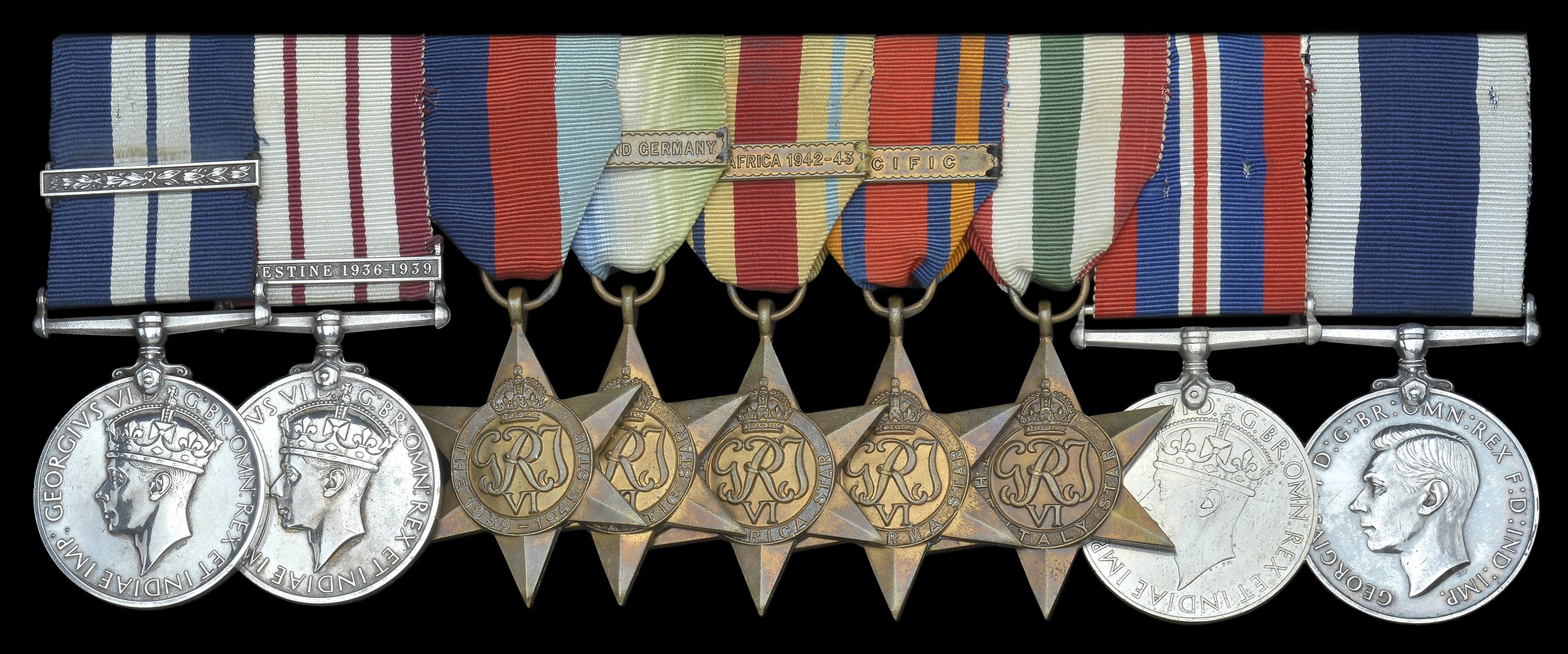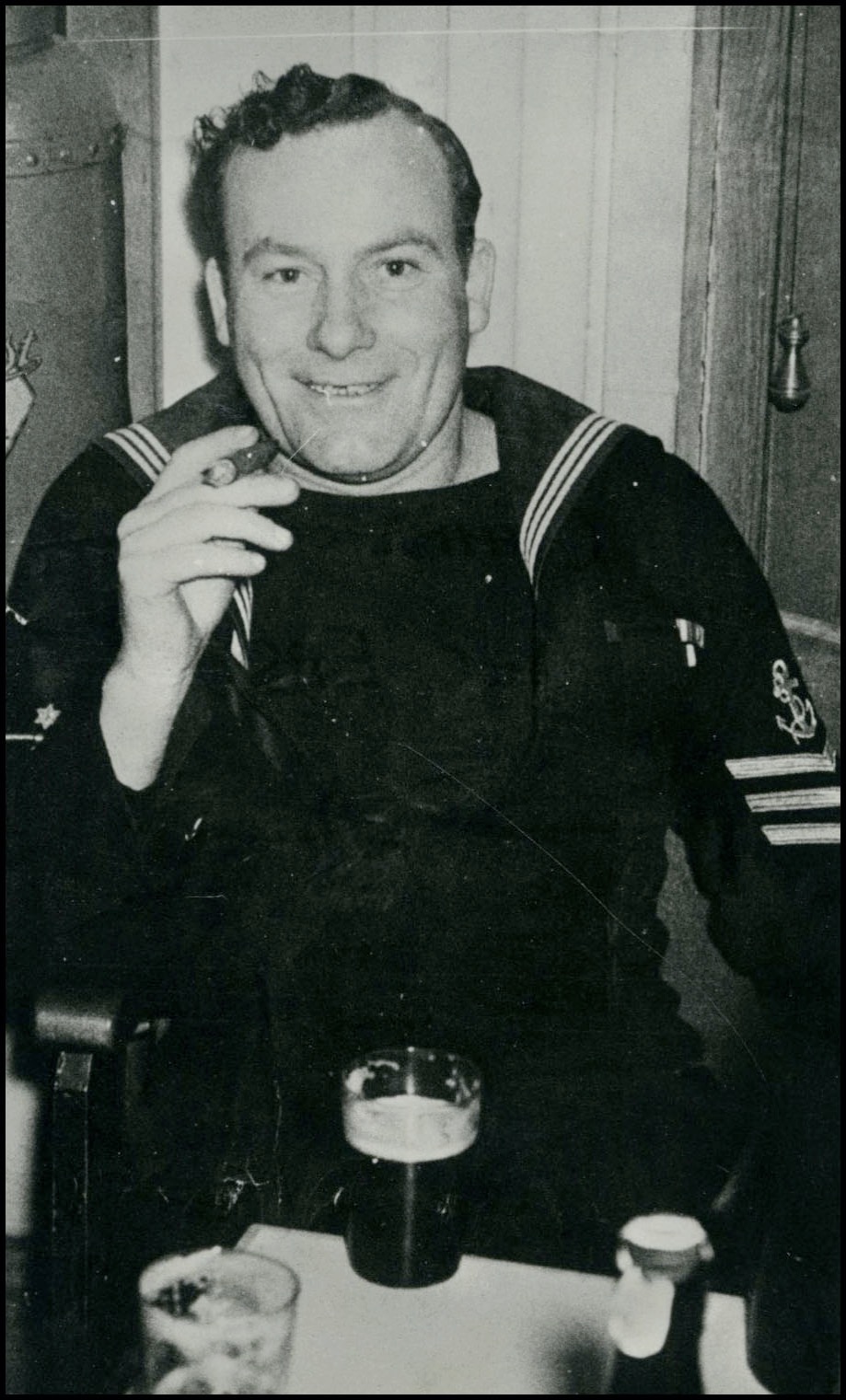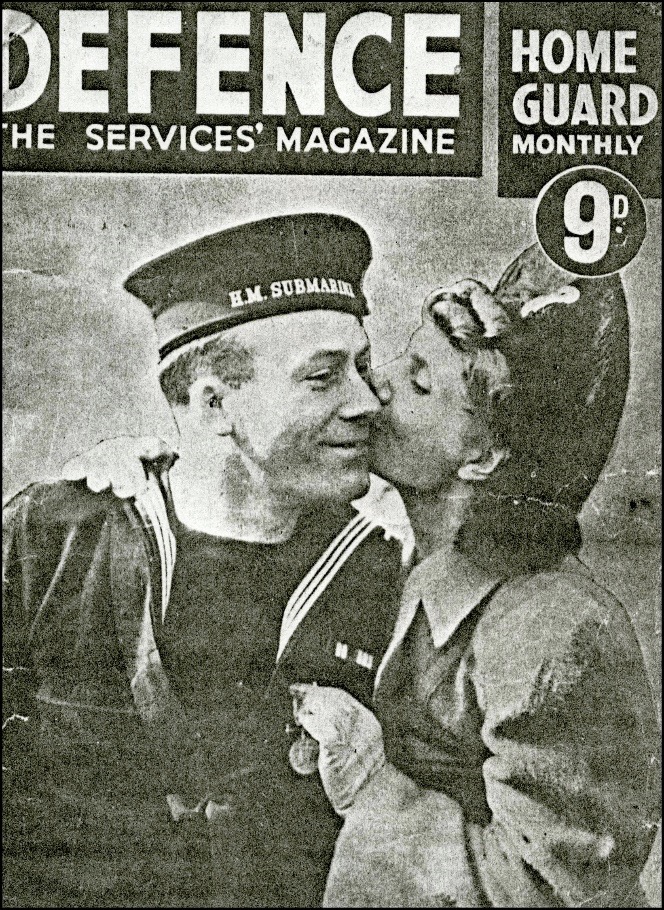An exceptional Second War ‘Utterly Fearless’ Submariner’s D.S.M. and Second Award Bar group of nine awarded to Petty Officer S. Hawkey, Royal Navy, for outstanding courage, coolness and devotion to duty in H.M. Submarine Porpoise, making vital ‘Magic Carpet’ runs to Malta, and striking the Japanese in H.M. Submarine Tally-Ho. As a Control Room Telephone Operator and Quarter Gunner ‘Excellent in all Respects’, Hawkey endured repeated close calls, such as ‘One of the Heaviest Depth-Charge Attacks Ever Made on a British Submarine’ (the Fore Hatch was Blown Open and water flooded in), close inshore work with Force 136 operatives, and ramming by an enemy warship Distinguished Service Medal, G.VI.R., with Second Award Bar (JX. 127066 S. Hawkey, A.B., R.N.); Naval General Service 1915-62, 1 clasp, Palestine 1936-1939 (JX. 127066 S. Hawkey, A.B., R.N.); 1939-45 Star; Atlantic Star, 1 clasp, France and Germany; Africa Star, 1 clasp, North Africa 1942-43; Burma Star, 1 clasp, Pacific; Italy Star; War Medal 1939-45; Royal Navy L.S. & G.C., G.VI.R., 1st issue (JX. 127066 S. Hawkey, A.B., R.N., H.M.S. Tally-Ho) mounted as worn, generally good very fine (9) £4,000-£5,000 --- Provenance: Sotheby’s, May 1989; Dix Noonan Webb, July 2015. Only 147 Second Award Bars were awarded to the Distinguished Service Medal during the Second World War. D.S.M. London Gazette 29 December 1942:
‘For distinguished services in successful patrols in H.M. submarines.’ D.S.M. Second Award Bar London Gazette 20 February 1945:
‘For outstanding courage, skill and undaunted devotion to duty in successful patrols in H.M. submarine Tally Ho.’ The original recommendation states: ‘For coolness and courage in the face of the enemy. Leading Seaman Hawkey is the 4-inch gun trainer in H.M.S. Tally Ho. He is utterly fearless, his coolness in action has had a valuable steadying effect upon the younger members of the gun’s crew, and his skill has contributed to the destruction by gunfire of an enemy warship and fourteen other vessels.’ Stanley ‘Stan’ Hawkey, the son of a farmer, was born in St. Columb, Cornwall on 24 February 1911. After working as a farm labourer, at age 15 he entered the Royal Navy at Devonport as a Boy 2nd Class in May 1926. After three years of boy service in Training Ships and Battleships, during which he was tattooed on both arms, Hawkey engaged for Twelve Years on his 18th birthday in 1929. Joining the Submarine Service, despite Tragic Disasters that killed his close Comrades Hawkey advanced from Ordinary to Able Seaman in June 1930. From then onwards his story is closely linked with that of another ‘newly made’ Able Seaman, A.B. Leslie Bennington, who was two years younger. Bennington went on to rise rapidly through the ranks and was commissioned, eventually becoming one of the few wartime Captains who had begun his naval career on the lower deck. Bennington held seven levels of rank between 1931 and 1945 - remarkably, Hawkey served alongside him for part of each upward step. Hawkey greatly admired Bennington and the two men always got on well together. By his 20th birthday, Hawkey decided to apply for transfer to the submarine branch but had a long wait for a vacancy to occur. In January 1932 H.M.S. M2, the world’s first submersible aircraft carrier, sank while attempting to launch her seaplane. Sixty men died; Hawkey personally knew six of them (they had transferred months ahead of him). He spent three years in the Mediterranean in the mid-1930s, serving as quartermaster in the destroyer Beagle, where he qualified for his first medal, the Naval General Service with bar ‘Palestine’ (Bennington was also aboard Beagle during this commission.). In May 1938 Hawkey was at last offered the chance to serve in submarines. Due to heavy losses in submarine crews due to accidents, the nerve-wracking Davis Submerged Escape Apparatus (DSEA) test was obligatory. Each would-be submariner put on a primitive oxygen rebreathing apparatus and was locked inside a simulated submarine escape hatch (which could only accommodate one person at a time) at the bottom of a giant water tower. The occupant had to wait until the chamber was completely full of water before opening the outer door, exiting, closing the hatch behind him (so that the chamber could be pumped out and made ready for the next man to climb inside) and swimming to the surface of the water tower, without showing any signs of panic. Hawkey passed his DSEA test with flying colours. Part of his training was two months service in a drifter. Bennington (by now a Lieutenant) was his Divisional Officer. Bennington’s assessment of A.B. Hawkey in August 1938 was ‘An excellent man, cheerful and willing. During a salvage operation in bad weather, he displayed great courage… Power of command excellent for an Able Seaman.’ Hawkey qualified as a member of the deck gun crew in H.M. Submarine Starfish. Many of his shipmates were subsequently drafted to the brand-new submarine Thetis, which was to undergo pre-commissioning trials in Liverpool bay. On 18 January 1939 Hawkey was transferred to the large minelaying submarine Porpoise, which could carry 50 mines, together with six tubes (with two 21-inch torpedoes apiece) and a four-inch gun. Hawkey had also been earmarked for transfer to Thetis, and in April 1939 Porpoise’s Captain received official notification of this. However, the Captain refused to release his recently arrived crewman. On 1 June Thetis sank with 56 men aboard after the outer and inner doors of one of her torpedo tubes were both opened by mistake. After 17 hours of work, the crew had pumped out enough water to raise her stern to the vertical, protruding upright out of the sea and bringing her DSEA escape hatch within 20 feet of the surface. Rescue ships arrived and signalled their presence. Four crew members (three naval personnel and a civilian aboard for the trials) in turn successfully used the escape chamber and were picked up. During the fifth escape attempt the occupant of the DSEA chamber opened its outer door before the chamber had completely flooded. The higher external pressure caused an in-rush of sea water, trapping and drowning him. Because the outer hatch remained partially open, the chamber became inoperative; no one else could escape. The surviving crewmen still trapped inside the hull slowly suffocated. Hawkey stated “I knew every one of these good men and the majority of them sailed with me in the S/M Starfish and without a sudden change around in the drafting arrangements I should have certainly met my fate with them.” Porpoise Carrier Service: ‘A first-class seaman and an excellent character’ In July 1939 Porpoise loaded live mines and sailed for Malta, to await the outbreak of war with Italy and orders to mine the entrance of the Italian battlefleet’s anchorage at Leghorn. By October that had not happened, so the submarines in the Mediterranean were ordered back to home waters. Hawkey married in November 1939 and settled permanently in Liverpool. High-intensity war operations got underway in March 1940, when Porpoise joined 4th Submarine Flotilla at Rosyth to conduct hazardous patrols and mine-laying operations off Norway. In November 1940 she began escorting convoys across the Atlantic (and was the first submarine to protect convoys from German surface raiders). In August 1941 Porpoise completed a refit and began patrols in the Bay of Biscay, laying mines off St Nazaire and Bordeaux. From October 1941 she was operational in the Mediterranean, based in Alexandria, and became the first subma...












